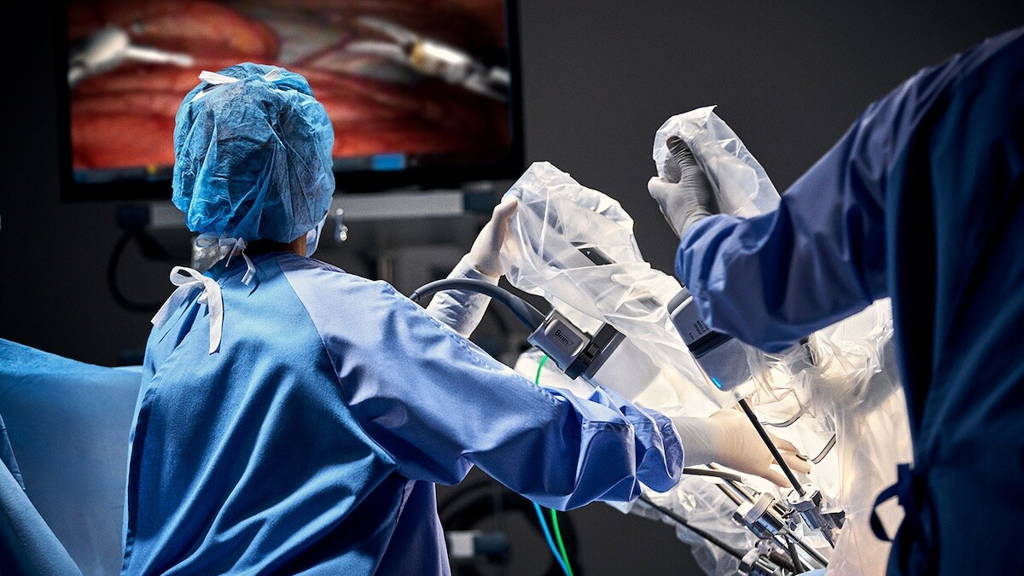Robot assisted surgery celebrated its breakthrough in the Netherlands several years ago. Nevertheless, innovative steps are still being taken. A good example is the Martini Hospital in Groningen. There, surgeon Jan Deroose started using the Da Vinci Xi operating robot last year on patients requiring surgery for lung cancer.
It can now be concluded that this decision has brought benefits for patients. Operating with the operating robot reduces the risk of complications and allows patients to recover faster. This has everything to do with the fact that thanks to the operating robot, the surgeon has a better view of the area to be operated on. In addition, the operating robot also makes it possible to remove lymph nodes around the lung more accurately.
Lobectomy with operating robot
In the surgical treatment of lung cancer, it is necessary in most cases to perform a lobectomy. This involves removing part of the lung. "The classic method of surgery for lung cancer is an 'open' operation where the surgeon spreads the ribs in the chest to reach the lungs. This is a difficult operation from which patients must recover for a relatively long time. Nowadays, therefore, keyhole surgery is more often chosen, in which the surgeon moves the necessary instruments toward the lung through small incisions between the ribs. The disadvantage of this operation is that there is sometimes very little space between the ribs. This limits the surgeon's movements," says Jan Deroose.
The operating robot solves this problem. The robot's narrow arms, which have a "wrist joint" and are equipped with a camera, need only an 8-millimeter opening to be inserted into the chest cavity. This allows the surgeon more freedom of movement.
Fewer complications
The increased freedom of movement and the ability to operate with greater precision mean that the risk of complications, both during and after lung surgery, decreases. It is even less likely to occur than with keyhole surgery. "In fact, the limited freedom of movement in keyhole surgery leads in some cases to complications such as bleeding. In such a case, the surgeon may still have to decide to perform open surgery during the operation. In operations with the operating robot, we see that this happens less often. That is an important advantage for the patient," Deroose said.
In addition, the use of the operating robot ensures that any lymph nodes to be removed are better visualized. These can therefore be removed much more accurately. Finally, thanks to the smaller openings in the chest, patients can recover faster after surgery.
Robotic surgery for lung cancer
Although the Martini Hospital claims to be the first hospital in the north of the Netherlands to perform lung cancer operations using an operating robot, this is already being done at other hospitals. At Isala, such operations are additionally supported with VR technology in some specific cases. With people who have very small growths in the lung, it is possible to remove only part of a lobe instead of an entire lobe. This procedure requires extreme precision and is possible thanks in part to the use of VR.
Robotic technology is also already being used in the examination and diagnosis of lung cancer. Last year, British researchers developed a tiny surgical robot that can travel deep into the lungs to detect and treat the first signs of cancer. The mini-robot, which is shaped like a tentacle, measures just 2 millimeters across and is controlled by magnets. Because of its small size, the robot can reach the smallest bronchioles, dramatically changing the treatment of lung cancer.






